Weobley
Our campiste for the first week or so of our stay was a Caravan Club site at Morehampton a few miles from Hereford. A good site for exploring the beautiful scenery here and the Welsh border, especially the Brecon Beacons and The Wye Valley. It was also not far from my daughter Natalie's house, at Malvern, as we had made arrangements to visit her and her family during our stay.
The nearest village to the campsite was Weobley, which is known for its black and white houses and we spent some time there looking round some antique shops and visiting the local pub, Ye Olde Salutation Inn where we sampled the local ale and booked the restaurant for a meal one evening.
Unsurprisingly, the local inhabitants are very proud of their village, with immaculate houses and gardens and in 1999 they won the Daily Telegraph Village of the Year. In recognition of this a sculpture by Walenty Pytel of a magpie (the village emblem) was erected.
Having researched the village I now realise that we missed seeing the remains of an early medieval castle at the south end of the main street where a footpath leads to the intriguing remains of the castle. This was first recorded during a tumultuous period in the middle of the 12th century when King Stephen and Empress Matilda fought for the crown; many unlicensed castles were thrown up during this period and Weobley was probably one of these 'adulterine' castles.
Historical Note:
The village name comes from the Saxon words 'Wibba' and 'ley'. Wibba was a proper name and ley means a clearing or glade in a woods, so Weobley means 'Wibba's woodland clearing'.
The Domesday Book spelled the name 'Wibelai' and recorded that Weobley was held by a Saxon nobleman named Eadwig Cild before the Norman Conquest. After the Conquest, it was granted to a Norman named Roger de Lacy. The Domesday Book mentions a priest, evidence that a late-Saxon church stood here at the time.
The settlement gained borough status in 1255 and had the right to hold a weekly market and an annual fair. The fair was held since at least 1231 and was centred around the manor house owned by Walter de Lacy. In 1295 the village sent two MPs to Parliament, but the residents later refused to spend the necessary two shillings for the MP's travel and living expenses.
Many years later Weobley was one of the so-called 'rotten boroughs', returning 2 MPs at every election. The selection of MPs was controlled by the local landowners. The legal niceties required that voters must eat and sleep in a place in order to vote, so the landowners would bring in tenants from outside the borough to occupy the village at election time. Once they had voted the tenants returned to their actual abode outside the village. These temporary residents were dubbed 'potwallopers'.
The timber-framed buildings in Weobley were built with freshly cut oak. Each beam was cut to size where it was felled and each timber was numbered so that the building could be easily assembled on-site like a gigantic jigsaw puzzle.
Timber-framing is a method of construction that began as early as the Stone sage and involved assembling a frame of timber and then filling the space between with materials such as stone, rubble, cob, or wattle and daub, often painted with a white limewash for protection. The timber frame turned black with age creating the picturesque 'black and white' buildings. Interestingly, for those in the building trade, this is pretty much how big blocks of appartments are being built in my home town now, except bricks and blocks are being used to infill the wooden structure.
During the medieval period Weobley grew prosperous due to the burgeoning wool trade; the local wool was so profitable it became known as Leominster Ore. Other major industries included glove making, brewing, and nail manufacture.
The village lapsed into economic decline during the 19th century, but this relative poverty meant that its historic timber-framed buildings were not remodelled in the fashion of the day, leaving Weobley with its rich architectural heritage today.
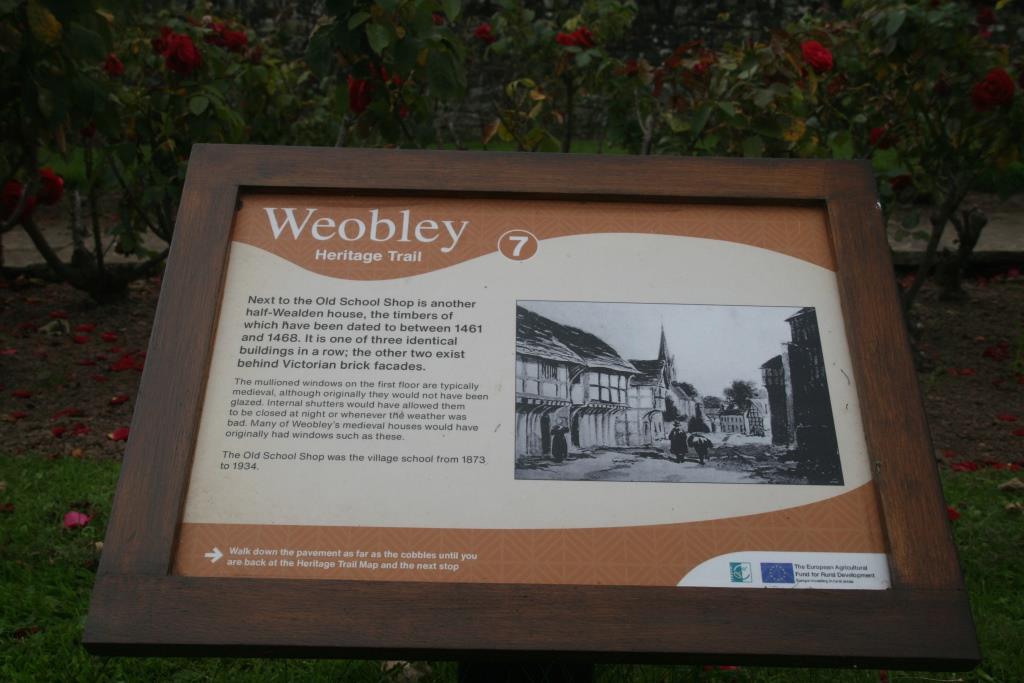 Weobley Historical Placard
Weobley Historical Placard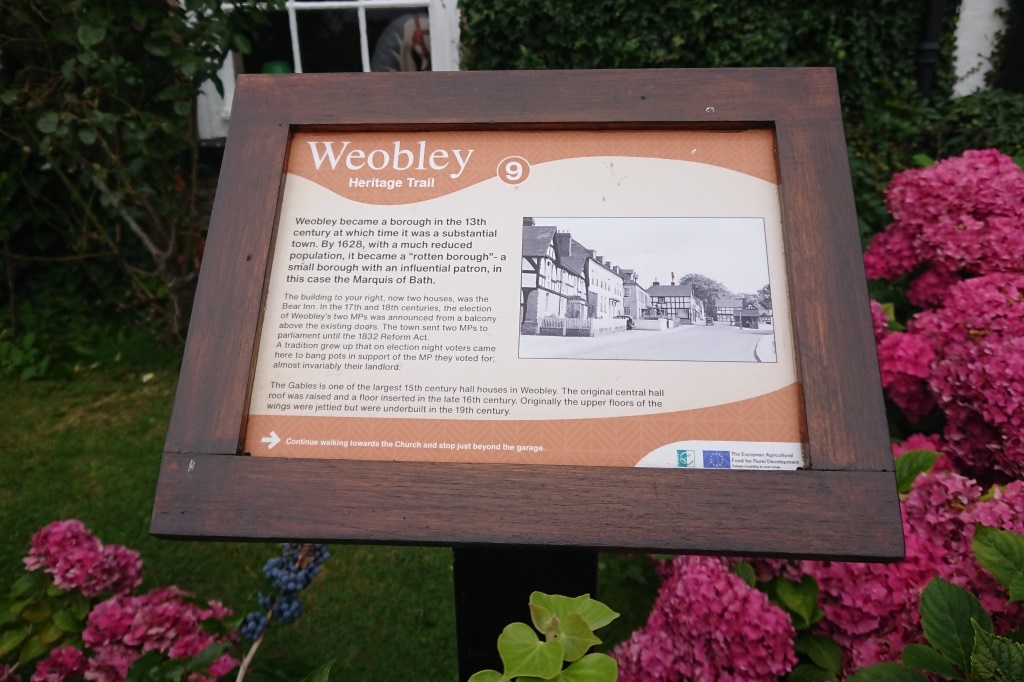 Weobley Historical Placard
Weobley Historical Placard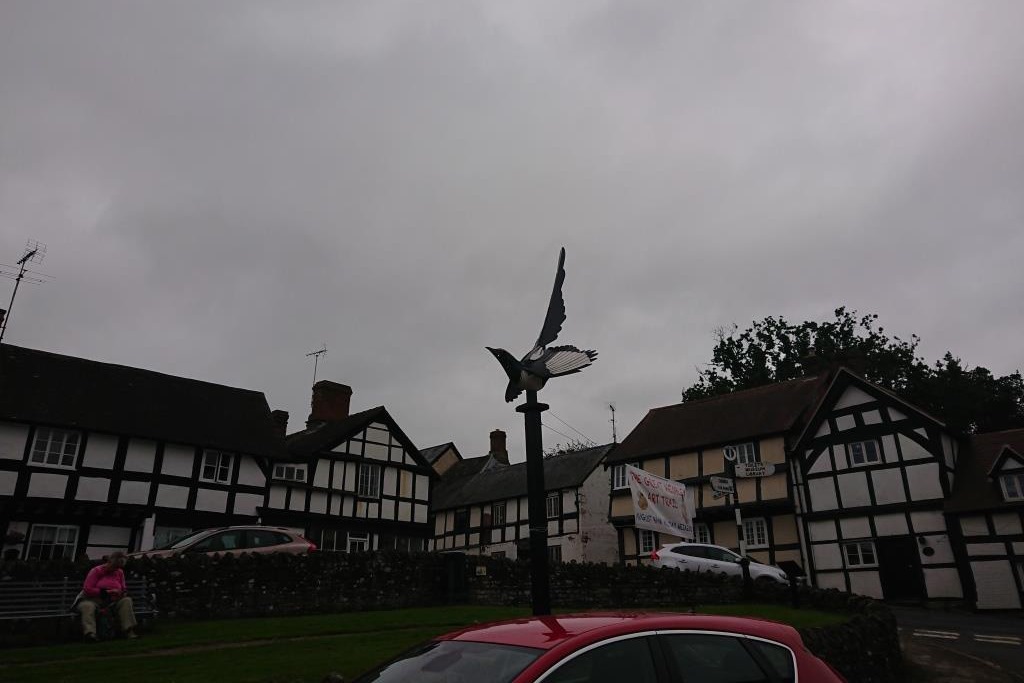 A sculpture by Walenty Pytel of a magpie (village emblem) after the village won the Daily Telegraph Village of the Year in 1999
A sculpture by Walenty Pytel of a magpie (village emblem) after the village won the Daily Telegraph Village of the Year in 1999 
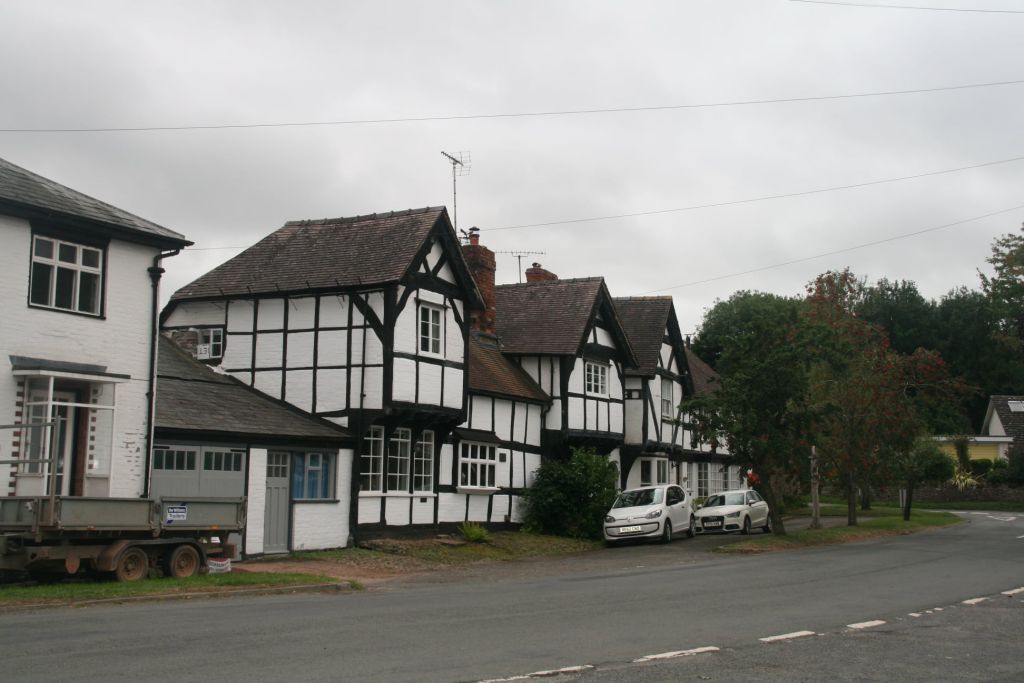 Weobley is one of Herefordshire's famed 'Black and White' villages
Weobley is one of Herefordshire's famed 'Black and White' villages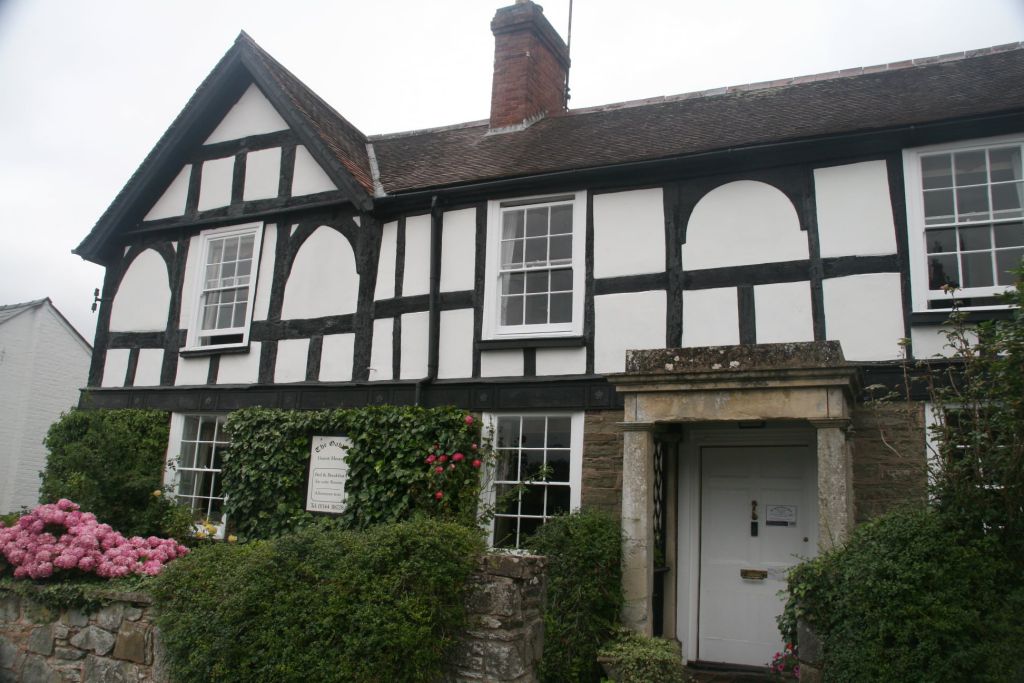
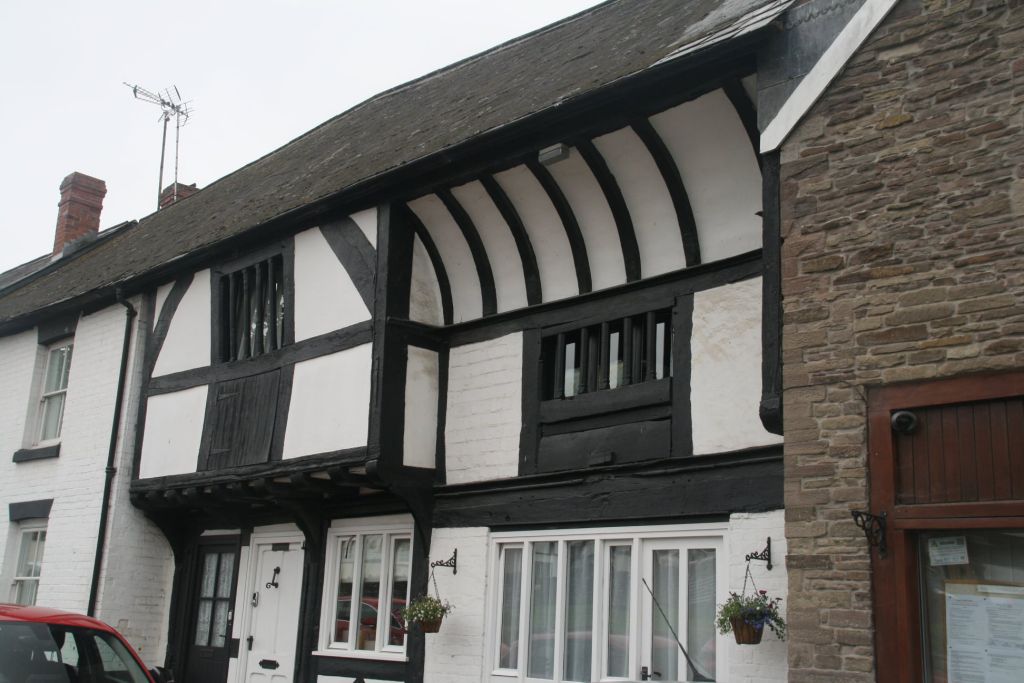
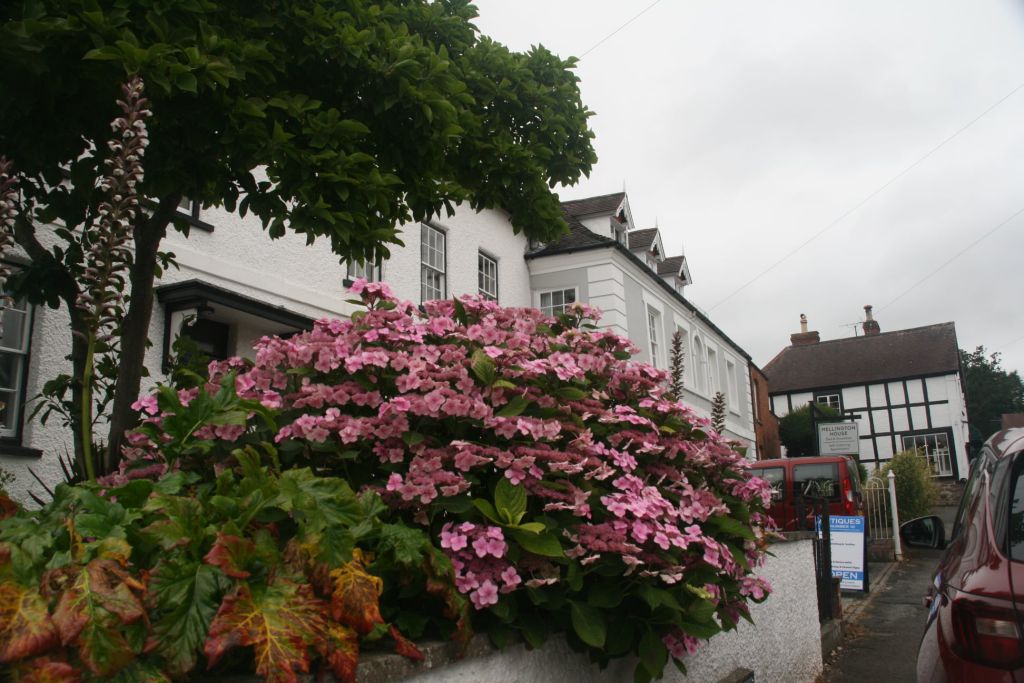 A village proud of its heritage and suitably decorated
A village proud of its heritage and suitably decorated An old fashion Garage in Weobley
An old fashion Garage in Weobley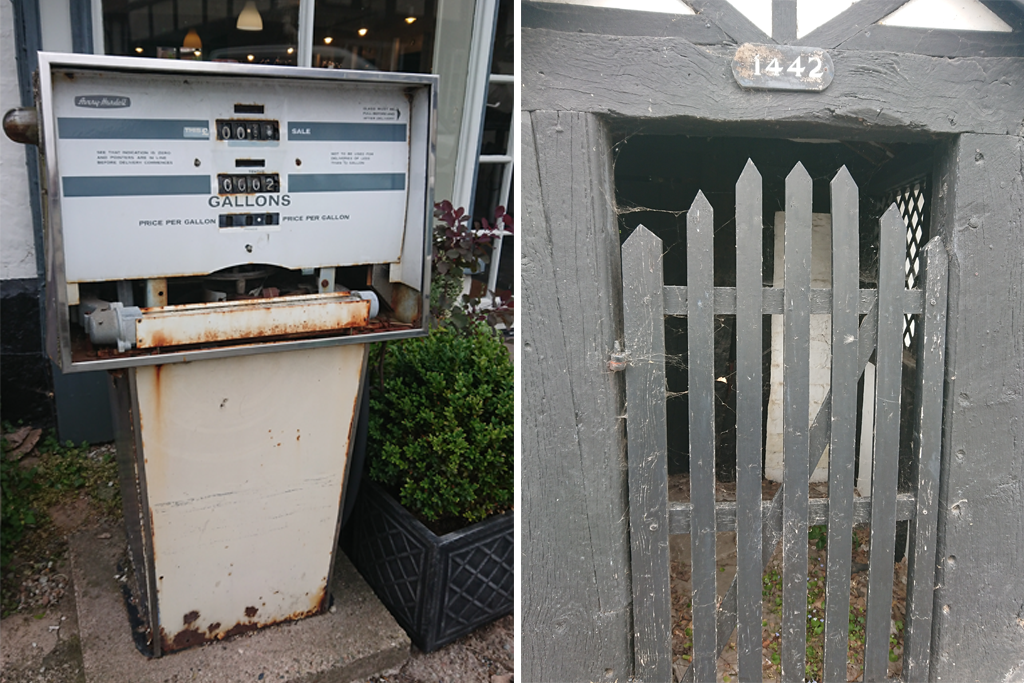 You don't see these old petrol pumps now - circa 1996 I estimate based on the price per litre on the counter & an old gate
You don't see these old petrol pumps now - circa 1996 I estimate based on the price per litre on the counter & an old gate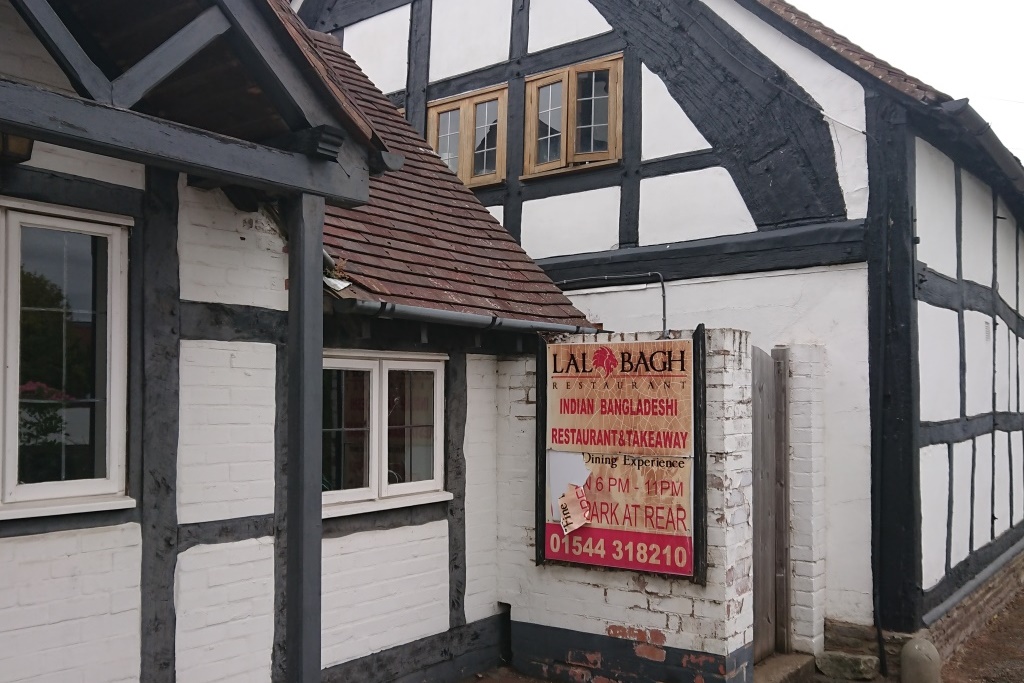 The residents of Weobley have better taste as this failed restaurant seems to show
The residents of Weobley have better taste as this failed restaurant seems to show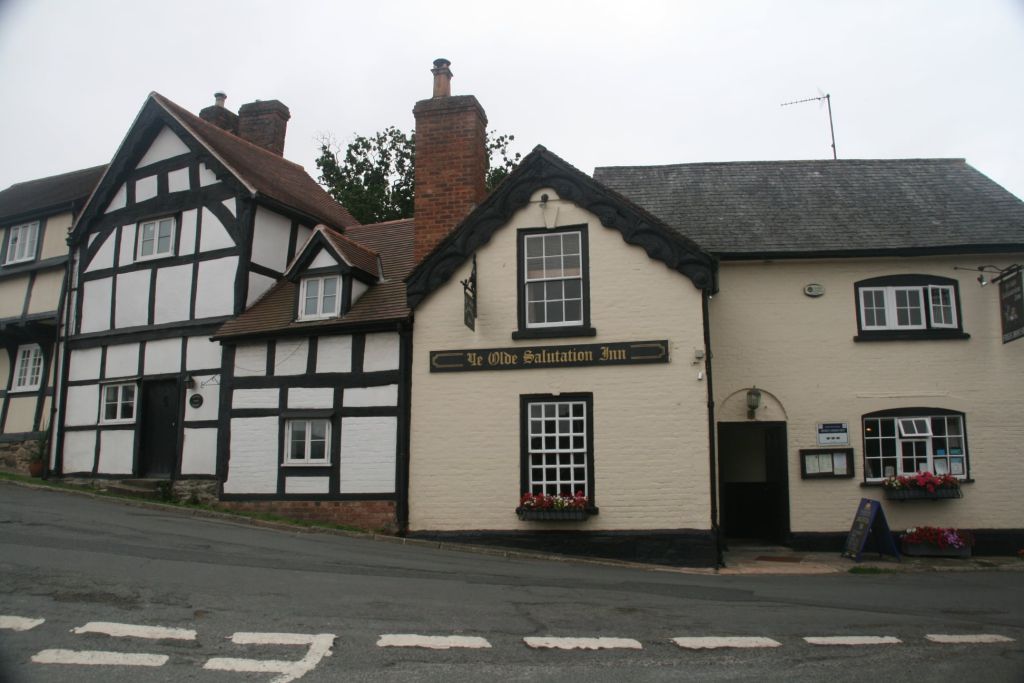 Ye Olde Salutation Inn - we had a few pints and a meal here (not bad)
Ye Olde Salutation Inn - we had a few pints and a meal here (not bad) 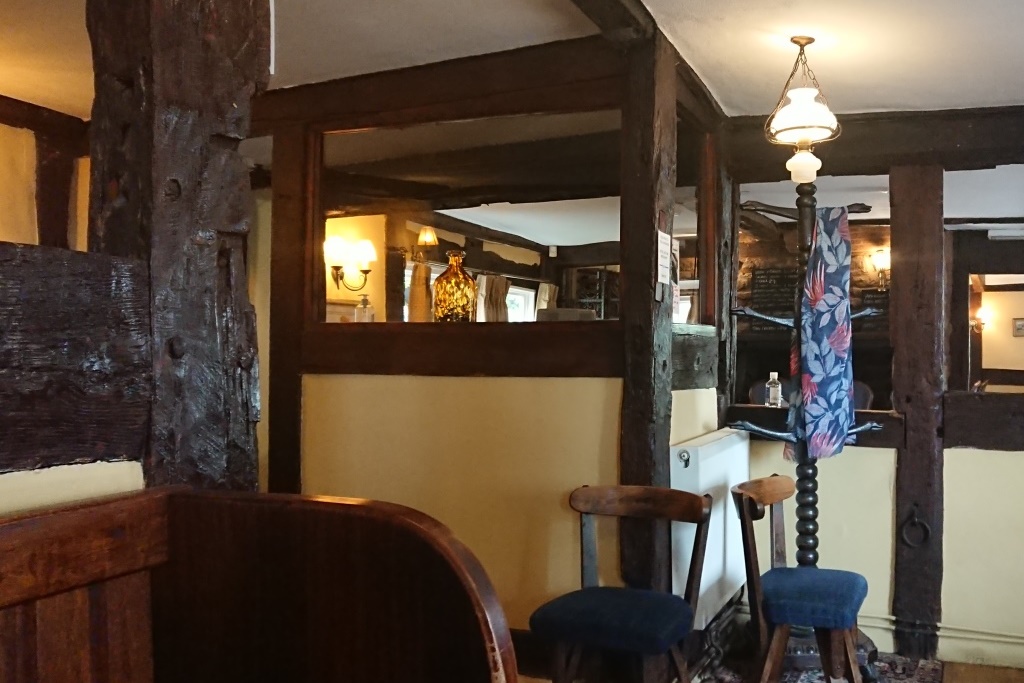 Inside the Inn
Inside the Inn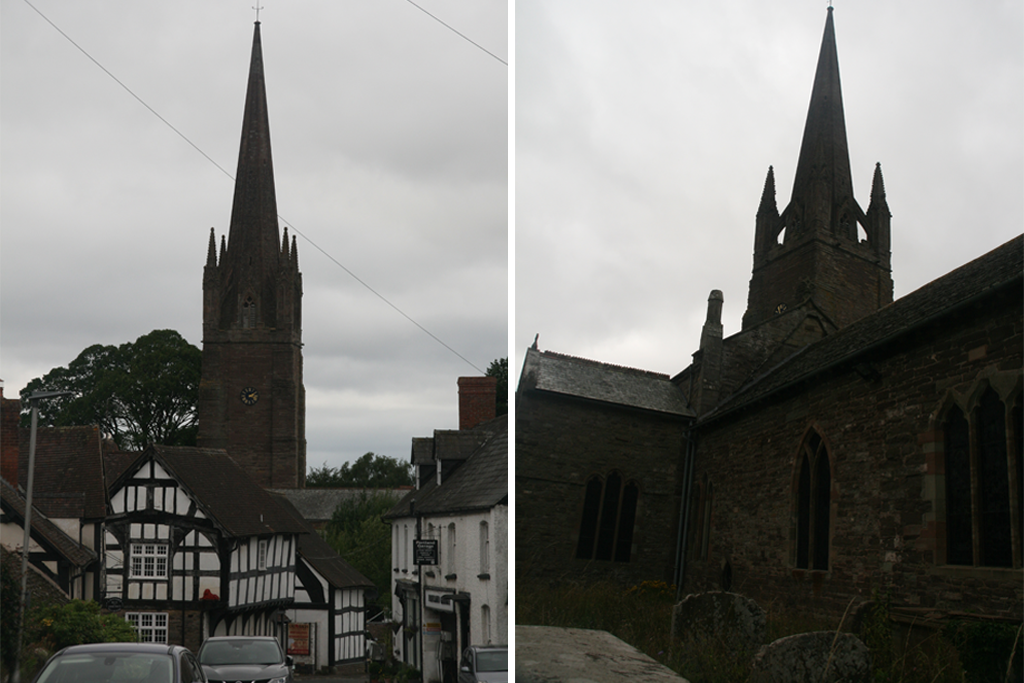 The church of St Peter and St Paul at Weobley
The church of St Peter and St Paul at Weobley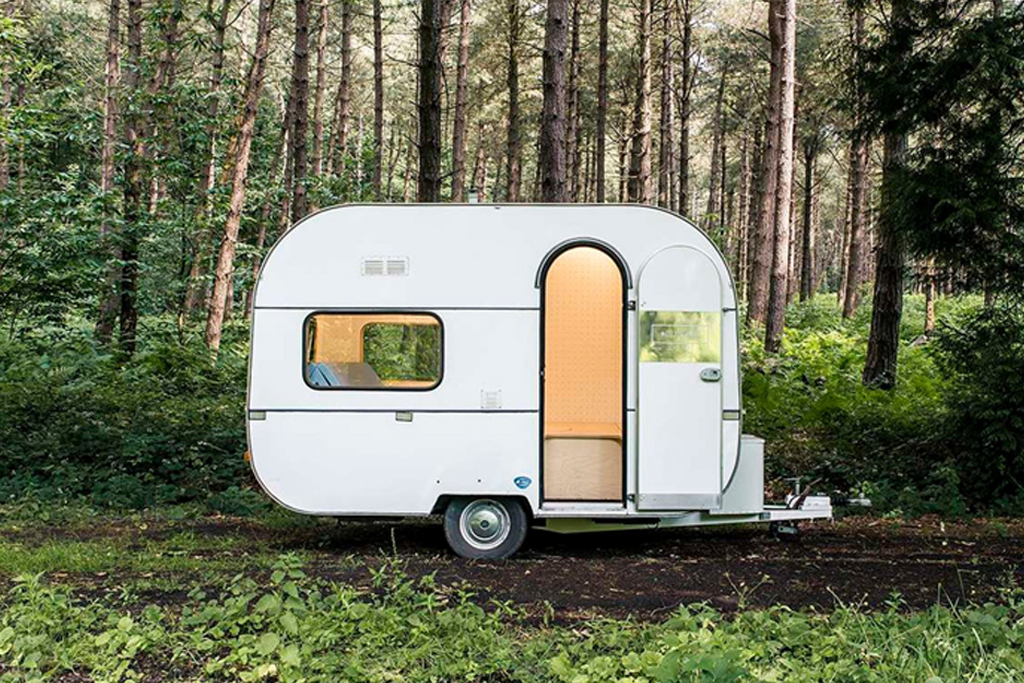 Last Slide in Sequence
Last Slide in Sequence